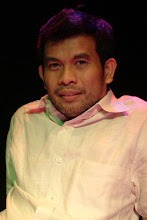


Fringe theatre is a term used to describe alternative theatre, or entertainment not of the mainstream. In London, United Kingdom, the Fringe is the term given to small scale theatres, many of them located above pubs, and the equivalent to New York's off-Broadway or Off-Off-Broadway theatres. There are also many unjuried theatre festivals which are often called fringe festivals. These festivals, such as Edinburgh Fringe and Adelaide Fringe Festival, permit artists to produce a wide variety of interesting works.
History of fringe theatre festivals
Other long running fringe festivals are the Windsor Fringe (founded 1969) and Malvern Fringe (founded 1977) which have provided platforms for showcasing up and coming talent. The oldest and largest fringe festival in England is the Brighton Festival Fringe, which has provided Fringe activity alongside the main Brighton Festival since its creation in 1967.
The second-largest fringe festival in the world is the Adelaide Fringe Festival. The Adelaide Fringe evolved in the early 1970s as a reaction against the establishment and the then 'mainstream' Adelaide Festival of Arts. Today, although two events are now inextricably linked, the Fringe Festival has overtaken the main Festival of Arts in terms of attendance. The Adelaide Fringe is renowned for its innovation, spontaneity and carnival atmosphere, and is widely regarded as one of the best events of its kind in the world.
The largest fringe festival in North America is the Edmonton International Fringe Festival, followed closely by the Winnipeg Fringe Theatre Festival. Founded in 1982 and 1988 respectively, Edmonton and Winnipeg are the premier stops on the Canadian fringe tour, a semi-official series of fringe theatre festivals that permit performers to travel east to west, from June to September. Canada now has more Fringe Festivals than any other country in the world and each Canadian Fringe festival strongly adheres to the philosophy that a "Fringe Festival" be unjuried, return 100% of box office proceeds back to the participating artists and remain affordable and accessible to all. The oldest and largest Fringe Festival in the United States is the Orlando Fringe.
Fringe festivals are becoming more common, with many major cities throughout the world now conducting their own Fringe Festivals of sorts.
Fringe theatre festival organisation
The mechanics of a Fringe festival are fairly simple. The most important element in the administration that creates a Fringe festival as opposed to a "normal" arts festival is the unjuried nature of the performances. Some festivals, notably the New York International Fringe Festival, stray from the original concept in that they pick their participants using a jury-based application process.
All performers are welcome to apply, regardless of their professional or amateur status. No restrictions are made as to the nature, style or theme of the performance. (Some festivals have children's areas, with an appropriate content limitation.) Many festivals find too many applicants for the number of available spaces; in this case, applicants are chosen based on an unrelated criteria, such as order of application or a random draw. The one common limitation of a Fringe festival is a geographic one; applicants may be divided into groups to ensure a mix of local, national and international talent.
Fringe festivals typically have a common organising group that handles ticketing, scheduling and some overall promotion (such as a program including all performers). Each production pays a set fee to this group, which usually includes their stage time as well as the organizational elements. Performers sometimes billet in the homes of local residents, further reducing their costs.
Elements of a typical fringe theatre production
The limitations and opportunities that the Fringe festival format presents lead to some common features.
Shows are typically technically sparse; they are commonly presented in shared venues, often with shared technicians and limited technical time, so sets and other technical theatre elements are kept simple. Venues themselves are often adapted from other uses.
Casts tend to be smaller than mainstream theatre; since many of the performing groups are traveling, and venues (and thus potential income) tend to be fairly small, expenses must usually be kept to a minimum. One-person shows are therefore quite common at Fringe festivals.
Fringe festival productions often showcase new scripts, especially ones on more obscure, edgy or unusual material. The lack of artistic vetting combined with relatively easy entry make risk-taking more feasible.
While most mainstream theatre shows are two or three acts long, taking two to three hours with intermissions, fringe shows tend to be closer to one hour, single-act productions. The typically lowered ticket prices of a fringe theatre show permit audiences to attend multiple shows in a single evening.
List of Fringe Festivals
2.Amsterdam Fringe Festival[1]
7.Capital Fringe (Washington, DC)
10.Edmonton International Fringe Festival
11.Indianapolis Theatre Fringe Festival
13.London Fringe Theatre Festival (Ontario)
18.New Orleans Fringe Festival
19.Orlando International Fringe Theater Festival
23.Saskatoon fringe theatre festival
24.San Francisco Fringe Festival
26.M1 Singapore Fringe Festival
28.Winnipeg Fringe Theatre Festival
31.New York International Fringe Festival
From Wikipedia, the free encyclopedia

No comments:
Post a Comment